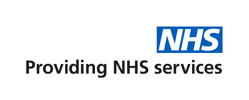We have had to make the hard decision to stop providing an ear syringing service at the practice.
We are faced with a huge increase in the demand for clinical time and medical services in other areas, and so we no longer have the capacity to be able to offer this service in the practice.
What we can do is encourage self-care for patients; there is evidence that oiling, and self-irrigation, can work well for a significant number of patients (approx. 50% reduction in the need for appointments).
We have taken available information forward to produce this leaflet and a process that our patients can go through, encouraging self-care, before accessing ear syringing.
Please note – We will never refuse appointments for those who have ear pain.
Please do not attempt to self – treat if any of the following apply to you:
- Pain in the ear
- A history of ear drum perforation in the affected ear
- A recent history of an ear infection in the affected ear
- Symptoms of infection in the ear – usually pain or a smelly discharge
- If you have an offensive discharge or bleeding from the ear (this may mean you have an ear infection)
- If you only have one hearing ear which is the affected ear
Previous ear surgery on the affected ear
- Sudden deafness or buzzing
- Foreign bodies in the ear
- Dizziness
If you experience any of the above, you should seek advice from your GP.
Ear Syringing/Ear Care
If there is, a build-up of wax in your ear(s) please read the following self-help guide.
What is ear wax?
Ear wax is normal and is produced to form a protective coating over the skin in the ear canal. Ears are normally self-cleaning – the movement of your jaw whilst eating and talking helps to move the wax along the canal where it will usually fall out naturally without you noticing.
Why is my ear blocked with wax?
The amount of ear wax produced varies from person to person; some people produce excessive amounts, which can lead to a blockage in the ear canal.
You are more likely to develop a blockage of wax in the canal if you:
- use cotton ear buds to clean the ear as this pushes the wax deeper into the canal
- wear a hearing aid, ear plugs or use in-ear speakers for I-pods or similar – as these can all interfere with the natural process of wax expulsion
- have abnormally narrow ear canals
- have a particularly hairy ear canal
- are elderly – because the ear wax you produce is drier and harder
- have a dry skin problem such as eczema or psoriasis.
Advice to help you manage and prevent ear wax blockage
Ear wax only becomes a problem if it causes deafness, discomfort or if your Health professional requires a clear view or your ear drum.
Olive Oil Drops
The following needs to be done 2-3 times daily for 14 days.
- Lie on your side with the affected ear uppermost
- Pull the outer ear gently backwards and upwards to straighten the ear canal
- Put 2-3 drops of olive oil into the affected ear(s) and gently massage just in front of the ear
- Stay laying on your side to allow the wax to soak in for around 15 mins
- Afterwards, wipe away any excess oil but do not plug your ear with cotton wool as this simply absorbs the oil
Your hearing problem may initially worsen after first starting to use the olive oil drops; this is why we advise you to concentrate on treating one ear at a time if both ears are blocked with wax.
In most cases, after 14 days, the wax will have softened sufficiently to encourage the wax to come out without further intervention.
Should I use cotton buds in my ears?
Never use cotton buds in your ears! This pushes the wax further into the ear making it worse. It can also cause ear infections and damage the ear drum.
Ear Syringing
Ear syringing is only usually considered if the above recommendations have proved to be unsuccessful. Ear wax needs to be softened as above for 14 days before attempting to syringe. Although the risks are low, there is a small chance (thought to be around 1 in 1000) of complications occurring with ear syringing- such as a perforated ear drum, middle ear infection, external canal infection or causing ringing in the ear (tinnitus).
If your ears are regularly becoming blocked with wax, after clearing the blockage we will usually suggest you use olive oil drops as above around once per week to keep the wax soft and encourage the natural process of wax expulsion.
Bulb syringes – What is a bulb syringe and where can I get one?
A bulb syringe is a small bulb shaped rubber object that will fill with water and allow the user to squirt the water gently into the ear to remove earwax. You can buy it from most pharmacies or online. It costs around £3 to £4.
Alternatively, there are now over-the-counter kits available from pharmacies. These contain a wax softener, which you use for 3-4 days and a small bulb syringe to enable you to remove the wax from your ear canals yourself. One such kit is called Otex Express Combi Pack (costs approx. £7.95). We do not advise you use this type of preparation to soften wax before having your ears syringed as longer term use can cause irritation and soreness to your ears. You may also see syringe kits specifically designed for ears (that direct the water to the sides of the ear rather than towards the drum).
An ear bulb syringe should be used when one or both ears are blocked with wax. This is called wax impaction. The ears are usually self-cleaning as the skin cells of the ear drum and ear canal are constantly migrating outwards and most people do not need to interfere with their ears at all. Some people make more wax, or their ears do not clean the wax as effectively as others. In these cases wax can build up inside the ear sometimes causing a blockage sensation and
A study on the use of the bulb syringe showed that half of patients who use it are successfully treated.
Is it safe and what are the risks of using a bulb syringe?
The use of the bulb syringe is commonly used in the USA or Europe. Two studies have shown the bulb syringe to be a safe treatment. The risks of using the bulb syringe include ear infection, failure to remove the wax and eardrum perforation. These risks are low.
What if my ears are still blocked after using the bulb syringe?
The procedure can be repeated but if it fails, you may need to try ear syringing. If this fails, you may be referred for microsuction.
What are the benefits of the bulb syringe?
The main benefit of the bulb syringe is that you can use it yourself, it is cheap to buy and can be re-used.
How do I use the bulb syringe?
The bulb syringe will most likely come with instructions but below is some advice on how to use the bulb syringe (you may need a family member to help you but it really is very simple):
- Firstly, use olive oil or sodium bicarbonate eardrops in the ear daily for 2-3 weeks. Apply a generous amount twice daily into the ear leaving he ear uppermost for 5-10 minutes after applying. If this does not clear the wax then the bulb syringe can be used.
- Put some clean warm (not hot) water in a bowl. Squirt the bulb syringe in the water a few times to fill it up with warm water.
- Hold your head to one side so the affected ear is facing upwards. You can do this in the shower or bath or lie on the bed with a towel underneath your head.
- If you experience any pain during or before this procedure stop immediately and see a practice nurse or GP for a review.
- Gently pull your ear in an upwards and outwards direction so that the water gets better access to the ear canal. Hold the nozzle inside the ear (not too deeply) and GENTLY squirt the water from the bulb syringe into the ear. You can gently squirt more bulb syringes into the ear if require. Leave the water in your ear for 1-3 minutes to soften the wax.
- Now tilt your head over so the water can fall out. Wiggle the outer part of the ear to help the water and wax come out. You can repeat the procedure if required.
- Repeat for the other ear if both ears are affected.
- If you get any pain or if the procedure is unsuccessful, see a practice nurse or GP.
Do I have to treat ear wax impaction (blocked ears from wax)?
No. If your ears being blocked with wax does not particularly trouble you, then you do not have to treat it. You can use olive oil or sodium bicarbonate drops daily and this will help the ears clean themselves. You can get these drops over the counter in any pharmacy.
Private ear syringing
There are some local options for having ear syringing done privately.
Specsavers – Earwax Removal | Specsavers UK
Hidden Hearing – Earwax Removal | Specsavers UK
Age Concern – Earwax Removal – Age Concern Age Concern (ageconcerneastbourne.org.uk)
Eastbourne Hearing Centre – Ear Care – Eastbourne Hearing CentreEastbourne Hearing Centre


